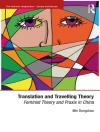Crime control continues to be a growth industry, despite the drop in crime indicators throughout the nation. This volume shows how state-of-the-art geographic information systems (GIS) are revolutionizing urban law enforcement, with an award-winning program in New York City leading the way. Electronic ‚pin mapping‘ is used to display the incidence of crime, to stimulate effective strategies and decision making, and to evaluate the impact of recent activity applied to hotspots.
The expert information presented by 12 contributors will guide departments without such tools to understand the latest technologies and successfully employ them. Besides describing and assessing cutting-edge techniques of crime mapping, this book emphasizes:
* the organizational and intellectual contexts in which spatial analysis of crime takes place,
* the technical problems of defining, measuring, interpreting, and predicting spatial concentrations of crime,
* the common use of New York City crime data, and
* practical applications of what is known (e.g., a review of mapping and analysis software packages using the same data set).
Students, academics, researchers, practitioners, and policymakers in the areas of criminal justice, corrections, geography, social problems, law and government, public administration, and public policy analysis will need to look at the interdisciplinary nature of both GIS and spatial dimensions of crime in order to
Inhaltsverzeichnis
PART ONE: INTRODUCTION: OPERATIONAL IMPERATIVES AND INTELLECTUAL CAUTIONARY TALES
Using a Geographic Information System for Tactical Crime Analysis – Philip Canter
The NYPD COMPSTAT Process – Philip G Mc Guire
Mapping for Analysis, Evaluation and Accountability
Filter, Fears and Photos – Keith Harries
Speculations and Explorations in the Geography of Crime
The Spatial Analysis of Crime – Charles Swartz
What Social Scientists Have Learned
PART TWO: ANALYZING CRIME HOT SPOTS IN NEW YORK
Finding Crime Hot Spots through Repeat Address Mapping – John E Eck, Jeffrey Gersh and Charlene Taylor
Exploratory Data Analysis of Crime Patterns – Sanjoy Chakravorty and William V Pelfrey
Preliminary Findings from the Bronx
Identifying Crime Hot Spots Using Kernel Smoothing – Sara Mc Lafferty, Doug Williamson and Philip G Mc Guire
The Utility of Standard Deviation Ellipses for Evaluating Hot Spots – Robert H Langworthy and Eric S Jefferis
PART THREE: CRIME AND FACILITIES
Crime, Space and Place – Thomas Kamber, John H Mollenkopf and Timothy A Ross
An Analysis of Crime Patterns in Brooklyn
Crime in Public Housing – Jeffrey Fagan and Garth Davies
Two-Way Diffusion Effects in Surrounding Neighborhoods
The Bronx and Chicago – Carolyn Rebecca Block and Richard Block
Street Robbery in the Environs of Rapid Transit Stations
Schools and Crime – Dennis W Roncek
PART FOUR: TOOLS FOR SPATIAL ANALYSIS
Evaluating Statistical Software for Analyzing Crime Patterns and Trends – Victor Goldsmith et al












